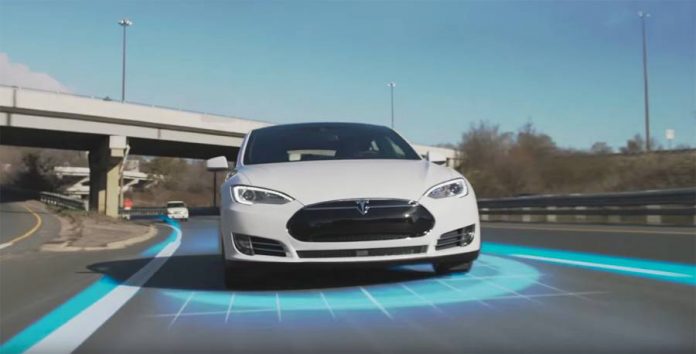
Yesterday, Tesla’s CEO Elon Musk announced that a new software update would come out for a limited number of Tesla cars. The patch resolves a few issues with the HW2 Autopilot technology.
The executive tweeted the software fix meant to correct a bug that appeared whenever the car system attempted to boot from “a subzero cold-soak.” Tesla deployed the over-the-air update successfully and is now holding to see if it works well.
When the company verifies that the update did not cause any field issues they will roll it out to the rest of the Tesla fleet, Musk added.
The update currently limits to Tesla’s most advanced cars
HW2 Autopilot software uploading to 1000 cars this eve. Will then hold to verify no field issues and upload to rest of fleet next week.
— Elon Musk (@elonmusk) December 31, 2016
The Autopilot fix relates to Tesla’s advanced hardware package which became a company standard in late October. The ‘Full Self-Driving Capability’ extension is currently available for most models.
These advanced hardware packages include eight cameras instead of four, ultrasonic sensors, radar, and a more powerful supercomputer that can process data 40 times faster than other Tesla machines.
However, they don’t include some of the most popular Autopilot features of other Teslas, such as emergency braking. This new software update looks to correct this flaw as well.
The new Autopilot fix might face some limitations
The 8.1 Autopilot update will bring Traffic Aware Cruise Control, Forward Collision Warning, and Autosteer to the enhanced cars mentioned above, but their revamped traits might not work the way they do in older Tesla models.
For instance, the Autosteer capability (which is probably the most famous Tesla feature) will only work at low speeds while in highways with clear markings.
Drivers enjoying the update can expect to use it only in heavy-traffic situations at speed below 35mph. The current Autosteer version could work on undivided roads and with the car reaching a speed of 90mph.
Tesla is in a trial period with their new hardware improvements
Those limitations are a direct consequence of Tesla’s current need to newer, self-made, imaging technologies. The company recently ended its relationship with Israeli-based imaging technology company Mobileye, which designed their hardware.
Mobileye released a statement in late September that highlighted their safety concerns regarding Tesla’s Autopilot feature. Other details regarding Tesla’s Autopilot crash on May 2016 seemed to have influenced their decision.
Once the automaker can create a stable relationship between better software and Tesla-made hardware, the Autopilot features might also improve.
These advancements are in Musk’s best interests, as he looks to showcase an entirely self-driven coast-to-coast trip with a Tesla car later this year.
Source: Fortune










